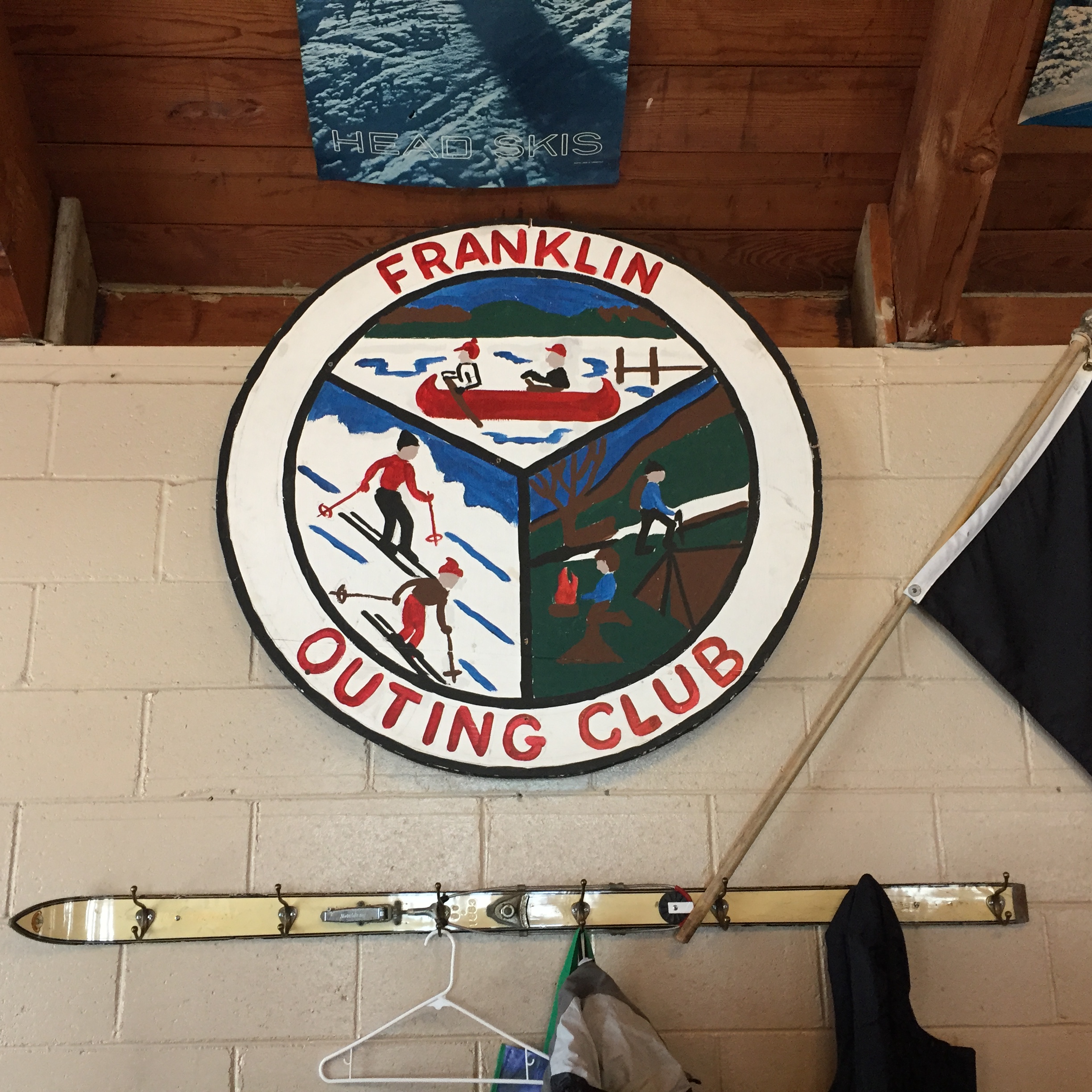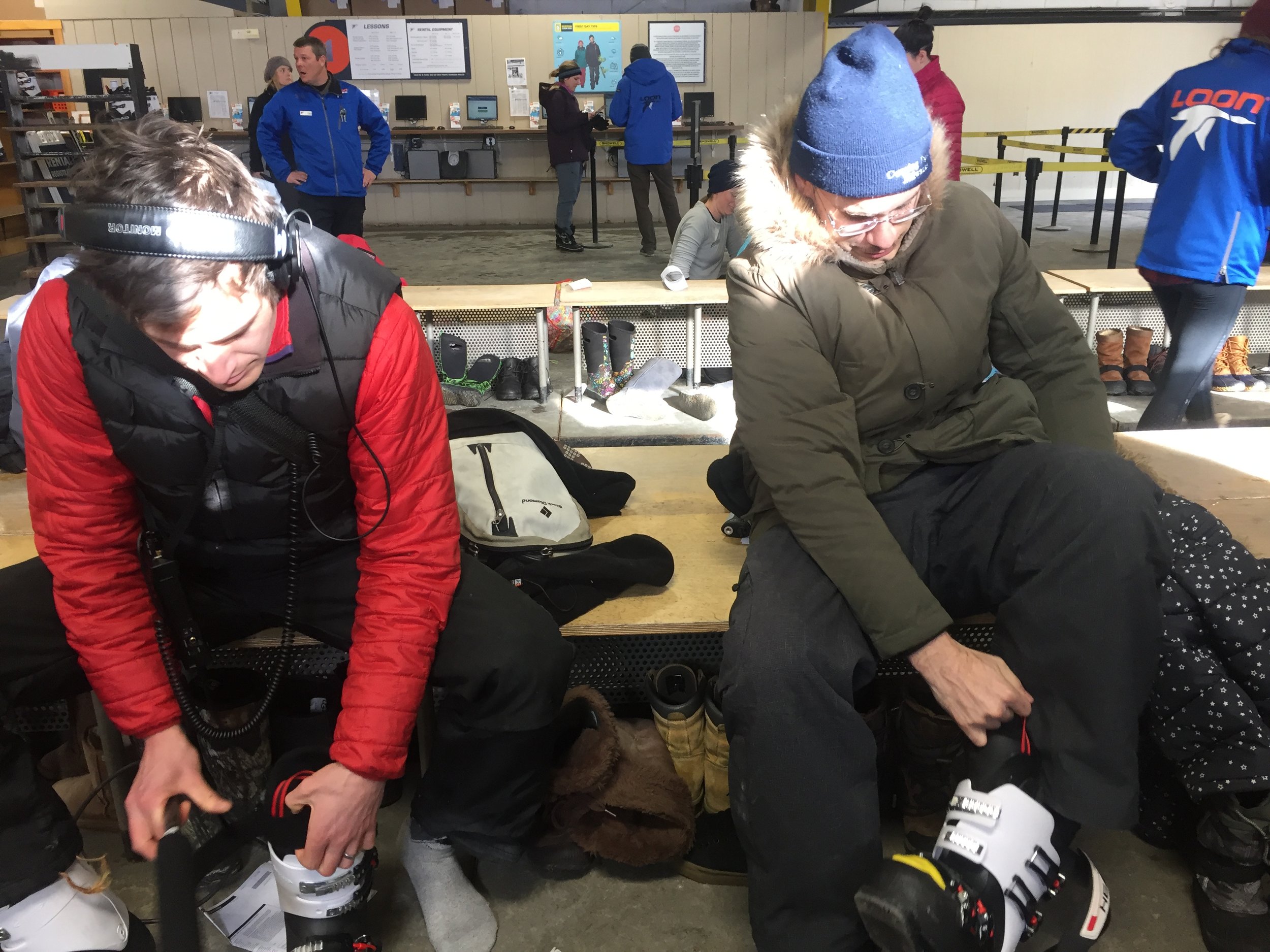Gnar Pow
Is skiing a sport reserved for rich people? It’s a question that has come up among the Outside/In crew a bunch this winter. Producers Maureen and Jimmy think so. They’ve never been skiing, and always associated it with exclusive resorts and tricked-out gear. Sam wants to prove them wrong.
In this episode, Sam takes his skeptical colleagues skiing for the very first time to prove that it doesn’t have to be a fancy endeavor. Will he succeed? Will it be wicked expensive? Will they enjoy it? Listen to find out.
“When did skiing get fancy?”
This was the question that set this all off. It came from Maureen McMurray, executive producer over here at Outside/In. Or at least that’s how I remember it.
“What makes you think skiing is fancy?” I probably didn’t say this in response, but I likely thought it. I started snowboarding because every Friday during the month of February my entire public school would go skiing. The mountain offered discounted tickets, and after a few years of being one of just a handful of kids to stay behind and choose between activities like calligraphy or cribbage, I scrounged together my odd-jobs money until I could get equipment. I’m reflexively defensive of skiing.
Both Maureen and our newest producer Jimmy Gutierrez had never been skiing, and so for me this kicked off a quest to convince them that skiing is not just a sport for “fancy people.”
But the truth is that today, I hardly do any alpine skiing. I essentially refuse to go unless there has been fresh snow in the past 48 hours. Even then, I tend to rely heavily on the “daily deals” that many resorts offer. The lift-tickets are simply too expensive, and I find the dollars-to-fun ratio to be much higher in cross-country skiing.
Nonetheless, I took them both to Loon Mountain, one of New Hampshire’s biggest and most expensive ski areas, where Jimmy revealed himself to be a quick study. “Too much rigmarole,” he said, “Price-wise, value-wise, would I ever do this again? I don’t think I would.” In one day he had reached the conclusion that I seem to have landed on after a decade on the slopes.
Maureen, on the other hand, was determined to try again, despite having had a rough day. “I was genuinely part angry and part humiliated,” she said, after getting down off the trails.
As a new skier, it’s hard to justify spending a small fortune for the privilege of falling down over and over while doing laps on the bunny hill. And in retrospect, going to one of the biggest and most expensive ski resorts for their first day on snow was simply silly. If all you need is a gradual incline, there’s no reason to shell out for big-mountain lift tickets.
So I recalibrated. Our second stop was the Veteran’s Memorial Recreation Area in Franklin, New Hampshire. This is a volunteer-operated community ski area that has a 100-year lease from the city, which cost it $1 back in 1961. Lift-tickets are only $20 for the day and it comes stocked with a basement full of donated equipment, free to use at your own risk.
This is not a hill that will keep experts enthralled for a full day: it has a rope-tow and a T-bar and only 230 feet of vertical drop. But as long as the snow is good, (a big if, given that the hill doesn’t have snowmaking) it’s perfect for beginners.
Little backyard ski hills like this used to be in virtually every town that had any kind of significant incline in New England. The “golden era” of skiing began in the 1930s, according to Jeremy Davis, founder of the New England and Northeast Lost Ski Areas Project. He says at the peak of the craze there were five or six hundred rope tows all across the region.
“That’s what’s really incredible about the whole thing, is you look at the sheer volume of these places, and they were pretty much everywhere,” said Davis, “I think it’s really hard for people to realize how many of these places there were.”
These ski areas were done in by a number of factors that lead to consolidation of the ski industry: rationing and travel bans during World War II took the first bite, increasing competition from mountains that were able to invest in new lodges and better grooming, not to mention higher costs for insurance and snowmaking today. In the end, smaller ski areas have all but ceased to exist.
In Ep. 33 @SamEBNHPR tries to teach @Moe_McMurray & @JimmyGootz to ski with...varying success https://t.co/tuTOC66K0k pic.twitter.com/bGlvsGxOcW
— Outside In Radio (@OutsideInRadio) March 3, 2017
But for new skiers like Maureen who find the big mountains intimidating, places like the hill in Franklin are hard to beat. “I love this,” Maureen said upon walking into the lodge and seeing the families seated next to a hot wood stove, outfitting their tiny children with second-hand boots and skis.
But, the truth is, the future doesn’t look great for these community ski areas. Last year, Franklin was unable to open at all, because the conditions were terrible all winter long and the outing club that runs the hill can’t afford snowmaking. “We rely on natural snow,” said Kathy Fuller, matriarch of the Franklin Outing Club, “and that’s an issue.”
In other words, these inexpensive, truly accessible ski areas are an endangered species. A 2012 analysis by an economist based in Canada forecast that in the 2020s, ski areas in New Hampshire would experience a 25-40% increase in the need for snowmaking. As these snowmaking expenses start to increase, this analysis forecast that even major ski areas in New England would start to go out of business. Of the 103 resorts the study modeled, it predicted only 30 would be economically viable in the 2070 to 2099 timeframe.
And that’s ski areas that make artificial snow. Those that don’t... how long can they last?
Skiing is not an inexpensive sport, but at least when I was growing up it was one that most kids in my public school class were able to afford. I think the question in my mind is, given the way things are going, will that be the case when my kids are ready to try skiing?
Outside/In was produced this week by:
Sam Evans-Brown with help from Maureen McMurray, Taylor Quimby, Molly Donahue, Jimmy Gutierrez, and Logan Shannon.
Special thanks this week go out to Veteran's Memorial Recreational Ski Area, Loon Mountain, and New England Lost Ski Areas Project.
If you’ve got a question for our Ask Sam hotline, give us a call! We’re always looking for rabbit holes to dive down into. Leave us a voicemail at: 1-603-223-2448. Don’t forget to leave a number so we can call you back.
Our theme music is by Breakmaster Cylinder.







